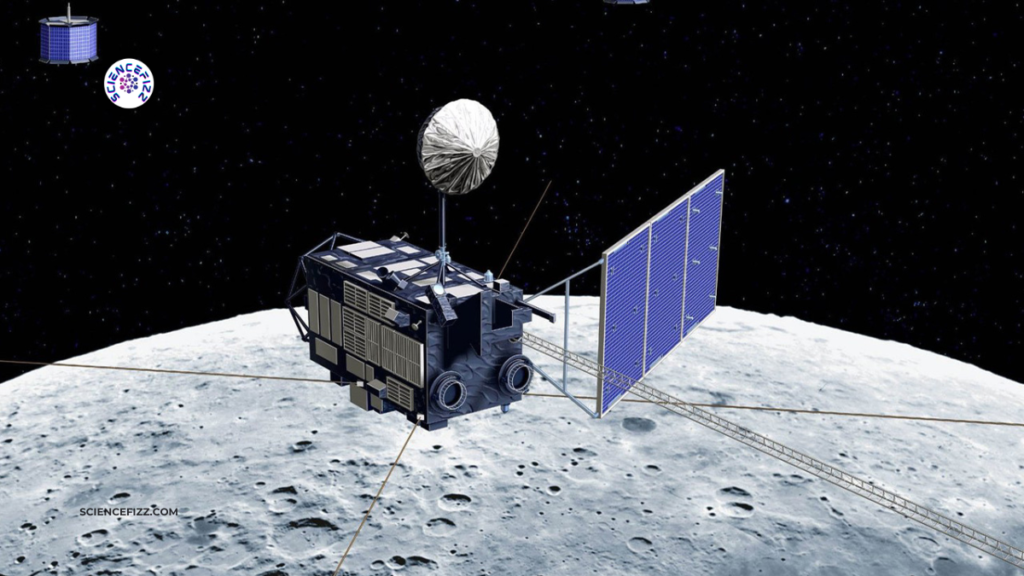The ISRO has planned to explore & research the dark side of the Moon through its upcoming projects like Chandrayaan-3 & LUPEX mission, with the collaboration of JAXA.
The Indian Space Research Organisation (ISRO) has been making significant progress in the field of space exploration in recent years.
The space agency has been working on a number of projects, including Chandrayaan-3 and the Lunar Polar Exploration (LUPEX) mission in collaboration with Japan, to explore the dark side or the full-year shadowed regions of the Moon.
In this article, we will take a closer look at ISRO’s upcoming plans and projects, aimed to explore the dark side of the Moon through the LUPEX mission.
What Is The LUPEX Mission?
The prime goal of the LUPEX mission is to confirm the presence of water in the polar regions of the Moon, which was detected by Chandrayaan-2.
The mission will consist of a rover and lander, ferrying several scientific instruments from both ISRO and the Japan Aerospace Exploration Agency (JAXA).
ISRO will develop the lander system, while JAXA will build the rover. The mission will launch atop a Japanese rocket and is planned to land on the Moon’s south pole.
Research of The Dark Side
The dark side of the Moon, or the far side, refers to the side that always faces away from the Earth.
China made history when its Chang’e-4 mission touched down on the far side of the Moon in 2019.
ISRO is also keen to investigate the lesser-known side of the Moon, with its upcoming lunar exploration mission.
The exploration of the dark side of the Moon can provide detailed information that could help humans to understand –
- The Moon’s formation
- The history of our solar system
- The scope of human exploration and
- Futuristic settlement in the future.
Collaboration With Japan’s JAXA
ISRO has collaborated with Japan for the upcoming lunar expedition. A team from JAXA recently visited India to meet with ISRO’s scientists to discuss the LUPEX mission.
According to recent developments, the launch will take a few years. In its annual report for 2022-23, ISRO stated that “India-Japan space cooperation is currently focusing on lunar exploration, satellite navigation, as well as earth observation.”
ISRO
As per reports, ISRO and JAXA are collaboratively working on executing the phase-A study of the joint Lunar polar exploration mission; finalizing the instruments to be accommodated in the lander and rover.
Significance of The LUPEX Mission
The LUPEX mission is significant for several reasons. One of the primary objectives of the mission is to confirm the presence of water in the polar regions of the Moon.
Water is one of the most important resources for the settlement of human civilization on the Moon.
If the water is found on the Moon in large volumes, it can be used to sustain human life, produce rocket fuel, and generate electricity.
The mission will also explore the geological composition of the Moon’s south pole and conduct experiments to research the lunar environment.
The Future Of Lunar Exploration
The LUPEX mission is just one of the most important lunar exploration missions that are planned for the upcoming years.
Russia, China, and the United States have also announced their plans to explore the Moon and establish a human civilization on the lunar surface.
The exploration of the Moon is a crucial step towards the exploration of other planets and celestial bodies in our solar system.
With advancements in technology and space exploration, we are on the rise of a new era of space exploration and discovery.
Conclusion: ISRO’s LUPEX Mission
Let’s wrap up this article which is about ISRO’s LUPEX mission which is aimed to explore the dark side of the Moon.
The mission will help us understand the formation of the celestial body of the Moon, the history of our solar system, and the scope for human exploration and settlement in the future.
